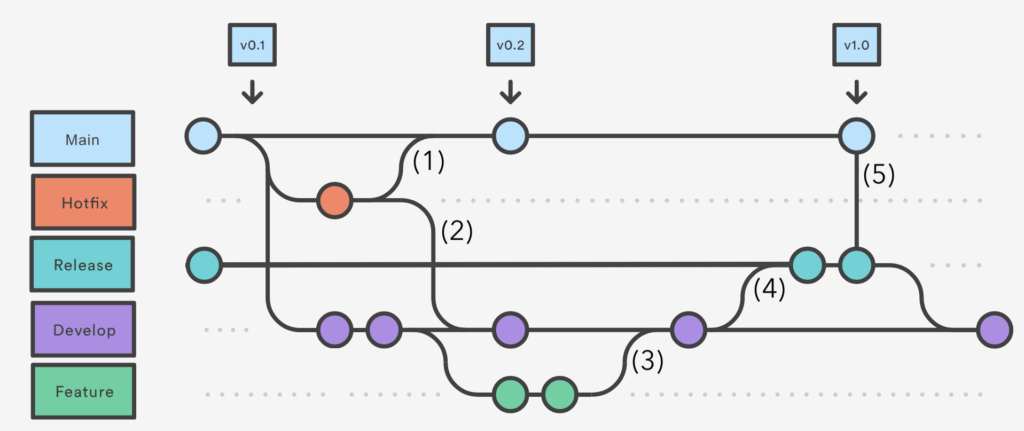Use Case - Organizr for Bitbucket
Structured Merge Hierarchy for Enterprise Releases
Control merge order with PR dependencies across branches and repos — reducing conflicts and streamlining release management at scale.












Use Case
Structured Merge Hierarchy for Enterprise Releases
The Challenge for Enterprises:
In complex, multi-branch Git workflows (such as Git Flow), large teams manage multiple concurrent pull requests across repositories and projects. Prioritizing the order in which pull requests merge is crucial — especially when hotfixes, bug fixes, and new features overlap. Default Bitbucket lacks native support to enforce merge dependencies or priorities, which can lead to code conflicts, deployment delays, and integration drift.

How Enterprises Use Organizr’s Structured Merge Hierarchy:
Organizr enables teams and release managers to define explicit pull request dependencies that enforce a merge order across branches, repositories, and projects. This structure ensures that:
- Critical pull requests (e.g., emergency hotfixes) are merged first to production branches without being blocked by lower priority work.
- Dependent pull requests (e.g., from feature to develop branches) cannot be merged until their prerequisite pull requests are merged, preventing integration drift and merge conflicts downstream.
- Release managers gain full visibility and control over complex merge sequences, making it easier to prioritize bugfixes, features, and release candidate merges based on business urgency and QA schedules.
For example, a release manager can configure the hierarchy so that a hotfix PR targeting master is merged first, then automatically require that the hotfix is merged into develop before feature PRs targeting develop are merged. This eliminates manual tracking and human error around merge order and branch consistency.
Why This Matters More Than Default Bitbucket Features:
Bitbucket does not provide a way to define or enforce merge dependencies between pull requests. Without this, enterprise teams often resort to manual coordination, scripts, or risk merging out-of-order, resulting in conflicts or broken builds. Organizr’s structured merge hierarchy:
- Automates dependency enforcement, eliminating manual merge coordination overhead.
- Provides a scalable, visual representation of merge priorities and dependencies across an entire Bitbucket instance.
- Reduces risk of integration conflicts and drift by ensuring branches stay in sync with business-critical merges.
Enterprise Impact:
- Accelerated, risk-mitigated releases: Critical fixes and features flow through the pipeline in the right order, avoiding bottlenecks and last-minute emergency merges.
- Improved developer and release manager productivity: Less time spent manually tracking and resolving merge order issues.
- Higher quality releases: Early identification of dependent changes reduces conflicts and failed builds downstream.
- Clear audit trail: Merge dependencies create transparent records of release sequencing for compliance and retrospectives.
In summary, Organizr’s pull request merge structure empowers enterprises to orchestrate complex multi-branch Git workflows with confidence, precision, and clarity — turning merge chaos into a streamlined, auditable release process. Creating merge dependencies between pull requests is accomplished by a simple drag-and-drop in the Organizr pull request navigator.
Use Cases
Explore More Use Cases...
Learn how enterprise teams streamline workflows, boost compliance, and drive productivity with Izymes apps





